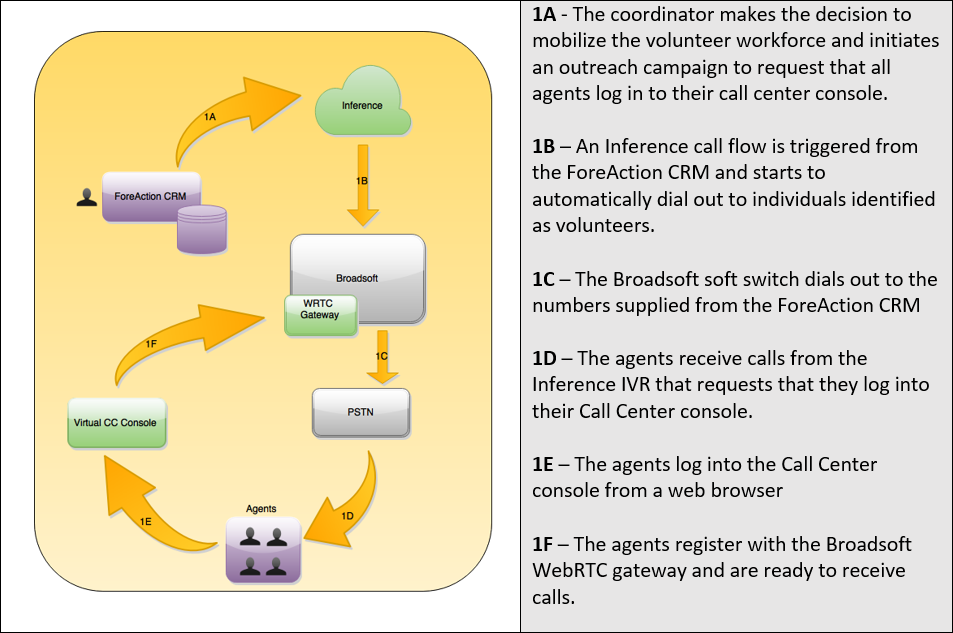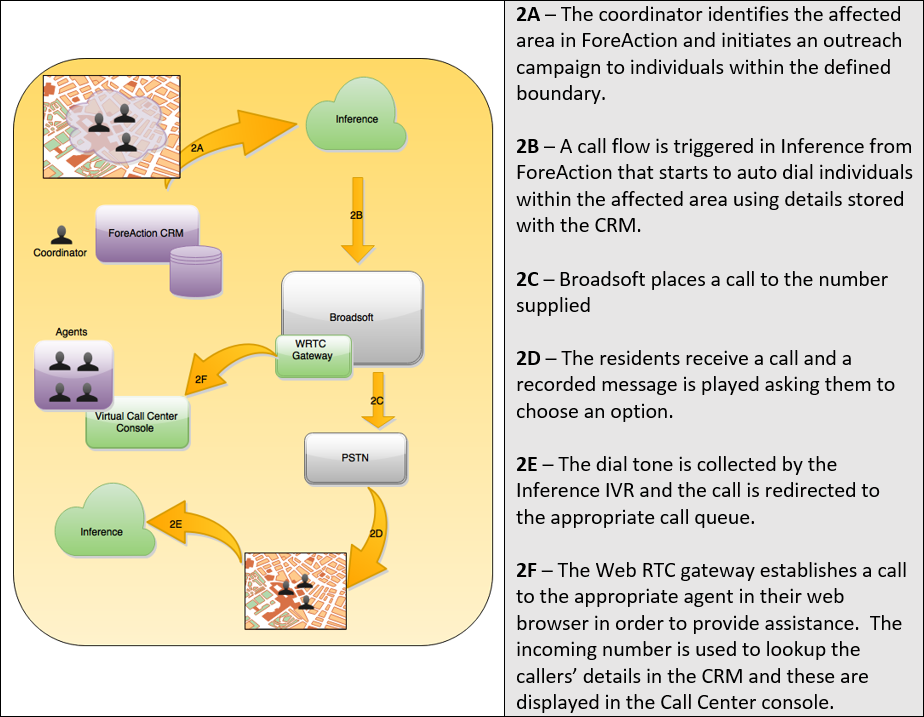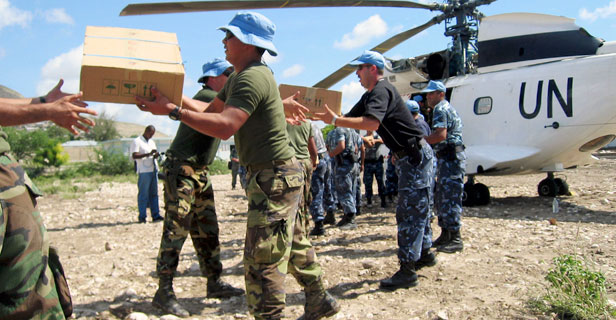Imagine you were asked to create a new call center to provide assistance to people in your city in the aftermath of a major disaster, such as an earthquake, a chemical spill, or a flood. Your call center would be staffed exclusively by volunteers, who would only be mobilized in the event of a major emergency.
A traditional call center system is an option, but for this kind of infrequent, on-demand application, the deployment and ongoing operating costs would be significant.Another less costly option would be to build a lighter weight, web-based call center that makes use of WebRTC – an open framework for the web that enables real-time communications in the browser.It’s the latter approach that NetFore chose when building an application to address this particular use case.
Called the Virtual Call Center (VCC), this web application brings together WebRTC and three other technology solutions: a constituent relationship management (CRM) system from NetFore Systems called foreAction; a WebRTC-enabled VOIP soft switch from BroadSoft; and a voice automation system from Inference Solutions.There are three primary users of the application: call center coordinators, volunteer call center agents, and the people who have been affected by the disaster in some way are looking for help.
Step 1: Mobilizing Call Center Volunteers
The first step in our use case is to mobilize the volunteers who will be operating the call center. NetFore’s CRM – foreAction – stores detailed data on each volunteer call center agent and helps connect them with the people who need support. Inference Solutions provides a cloud-based service that extends capabilities to a Broadsoft trunk group. The VCC application uses Inference Studio to define the call flow that is activated when the call center coordinator determines it’s time to mobilize volunteers. The coordinator clicks a button in ForeAction to activate the call flow, which triggers a series of API calls. These calls are made to a published RESTful API, which is automatically created in Inference Studio along with the call flow.
foreAction then identifies which people in its database are listed as volunteer call center agents and begins calling them using the Inference cloud service.The volunteers who receive a call are asked to log into the VCC’s agent console using their web browser. As each volunteer logs in, their status is immediately listed as “Available” on the coordinator’s console, which gives the coordinator an at-a-glance view of which volunteers are online at any one time.

Step 2: Providing assistance to people affected by the disaster
Once the volunteers are mobilized, the next step is to communicate directly with the people affected by the disaster, determine what type of help they need, and connect them with one of the call center volunteers.foreAction is a geo-spatially aware CRM system, which means that each address in its database is “geo-coded” with latitude and longitude information. This makes it possible for the call center coordinator to view a map of the city and draw a free-form outline around the specific neighborhoods affected by the disaster.
foreAction then generates a list of all the people living in these neighborhoods and enables the coordinator to trigger automated calling to everyone in this area.When the call is answered by one of the people on the list, the application triggers a call flow which plays a recorded message. The message directs the person receiving the call to select one of several options – such as pressing 1 for medical attention or pressing 2 to get up-to-date information about the location and status of emergency shelters. The selection of any option results in the person being transferred to one of the call center agents.
The agent sees the call coming in on their browser along with the caller’s details, including the caller’s address location, which is dynamically shown on a map as the call arrives.When an agent is active on a call, he or she can communicate directly with the person who’s looking for assistance. The VCC application also provides presence and chat capabilities between the agent and the coordinator, and gives the coordinator the ability to broadcast messages to all agents as more details on the crisis become available.

As this brief summary suggests, there are several benefits to opting for a web-based, WebRTC-enabled approach to this call center use case. If you’d like more information about the Virtual Call Center (VCC) application, contact NetFore directly.

Graham Andrews
Graham is a Senior Technical Project Lead at NetFore. He led the team that developed the Virtual Call Center Application. For more information about NetFore or software development, visit www.netfore.com.
SUBSCRIBE TO NETFORE’S BLOG
Get the latest blog posts from NetFore delivered to your inbox. Enter your email address below.



